Who was buried with Nestor’s Cup? Macroscopic and microscopic analyses of the cremated remains from Tomb 168 (second half of the 8th century BCE, Pithekoussai, Ischia Island, Italy), 2021
Cremation 168 from the second half of the 8 th century BCE (Pithekoussai's necropolis, Ischia Isl... more Cremation 168 from the second half of the 8 th century BCE (Pithekoussai's necropolis, Ischia Island, Italy), better known as the Tomb of Nestor's Cup, is widely considered as one of the most intriguing discoveries in the Mediterranean Pre-Classic archaeology. A drinking cup, from which the Tomb's name derives, bears one of the earliest surviving examples of written Greek, representing the oldest Homeric poetry ever recovered. According to previous osteological analyses, the Cup is associated with the cremated remains of a juvenile, aged approximately 10-14 years at death. Since then, a vast body of literature has attempted to explain the unique association between the exceptionality of the grave good complex, the symposiac and erotic evocation of the Nestor's Cup inscription with the young age of the individual buried with it. This paper reconsiders previous assessments of the remains by combining gross morphology with qualitative histology and histomorphometric analyses of the burnt bone fragments. This work reveals the commingled nature of the bone assemblage, identifying for the first time, more than one human individual mixed with faunal remains. These outcomes dramatically change previous reconstructions of the cremation deposit, rewriting the answer to the question: who was buried with Nestor's Cup?.
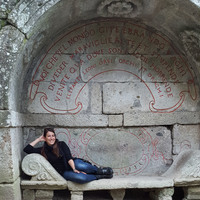


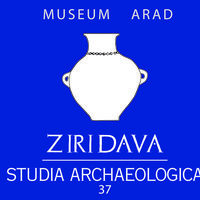


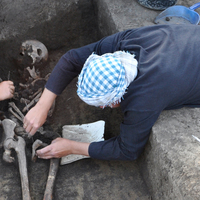
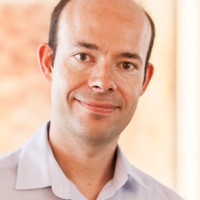

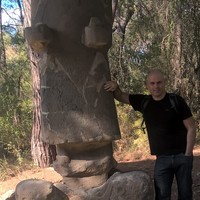
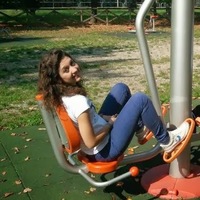
Uploads
Papers by Alessia Nava
heterogeneity. At least 7% of historical individuals carry ancestry uncommon in the region where they were sampled, some indicating cross-Mediterranean
contacts. Despite this high level of mobility, overall population structure across western Eurasia is relatively stable through the historical period up to the present, mirroring geography. We show that, under standard population genetics models with local panmixia, the observed level of dispersal would lead to a collapse of population structure. Persistent population structure thus suggests a lower effective migration rate than indicated by the observed dispersal. We hypothesize that this phenomenon can be explained by extensive
transient dispersal arising from drastically improved transportation networks and the Roman
Empire’s mobilization of people for trade, labor, and military. This work highlights the utility of
ancient DNA in elucidating finer scale human population dynamics in recent history.
heterogeneity. At least 7% of historical individuals carry ancestry uncommon in the region where they were sampled, some indicating cross-Mediterranean
contacts. Despite this high level of mobility, overall population structure across western Eurasia is relatively stable through the historical period up to the present, mirroring geography. We show that, under standard population genetics models with local panmixia, the observed level of dispersal would lead to a collapse of population structure. Persistent population structure thus suggests a lower effective migration rate than indicated by the observed dispersal. We hypothesize that this phenomenon can be explained by extensive
transient dispersal arising from drastically improved transportation networks and the Roman
Empire’s mobilization of people for trade, labor, and military. This work highlights the utility of
ancient DNA in elucidating finer scale human population dynamics in recent history.
The Daba site is, to date, represented by two Large Collective Graves (LCG1 and LCG2), by a later Parthian grave and by several pits used as ritual offering. Unlike other sites of the area, Daba collective graves are very well preserved and quite undisturbed. The archaeological evidence suggests that the whole area could have been a monumental tribute to tribal alliance dating to the end of II millennium BC.
The first burial monument is of rectangular shape, with a length of about 14 m and a width of 3,5 m. LCG1 returned human remains referable at least to 188 individuals and nearly 2000 precious goods, including bronze and steatite vessels, daggers, bracelets, arrowheads, decorated shell medallions and numerous beads and necklaces made in various materials.
LCG2, continuously used from the Late Bronze Age (1600-1350 BC) until the Iron Age II/III Period (around 600 BC), is bigger than the first one (23 meters in length and 6 in width, included the outer arrangements). Thousands of objects have been recovered during the exploration of the grave, frequently associated to human remains referable to 28 individuals from primary burials and a minimum number of 202 individuals from secondary depositions.
Many phases of frequentation have been recognized, as well as different phases of restoration and reorganization of the building.
During the last phase the structure was almost completely filled and the stone walls partially collapsed. Moreover, several secondary assemblages of human bones were located all around the structure, while scattered bones associated with archaeological materials and faunal remains have been found inside the monumental grave .
The second phase testify a continuity of frequentation from the top of the structure: many secondary depositions have been found over the walls and the secondary bone clusters have often a clear structural organization.
The first, and last excavated, phase is characterized by the collapse of the west wall and by the reuse of the slabs to construct circular funerary chambers. In the outer eastern area the original entrance hall lose its primary function, becoming a closed chamber with several primary burials.
Although not entirely investigated, LCG2 provided some interesting evidence related to the funerary practices and the offering rituals in the Daba sacred area. Several typologies of deposition of skeletal materials have been identified, that differ in reference to their organization, to the quantity of bones, to the number of individuals represented in them and to their association with grave goods and animal bones. Peculiar typologies of secondary depositions emerged in Daba, like bone assemblages with a clear structured shape that suggests the use of perishable containers to settle the already skeletonized individuals inside or around the large collective grave. To underline the multifaceted habits that took place at Daba, several case have been documented in the secondary depositions that likely could be interpreted as naturally mummified skeletal districts, as well as a single case of an entire bone artificially modified in its shape for ritual purposes.Archaeozoological analysis shows that the majority of faunal remains belongs to goats, but also cattle, sheep, dogs, horses and fish are represented. Rare are camelids and pigs. The preferential choice of specific meat portions, often discovered in close relation with human bones, suggests the funerary ritual involved offerings of entire animals or certain parts of them.
All these evidence point out that the Daba sacred area is of fundamental importance for the understanding of the tribal societies of the Iron Age in the whole Arabian Peninsula and the site assumes a role of great significance for the funerary rituals. In Daba burial complex the bones of ancestors acquired a role that seems to go beyond the simple interment, sometimes turning the focus of the ritual into an object for the ritual itself.